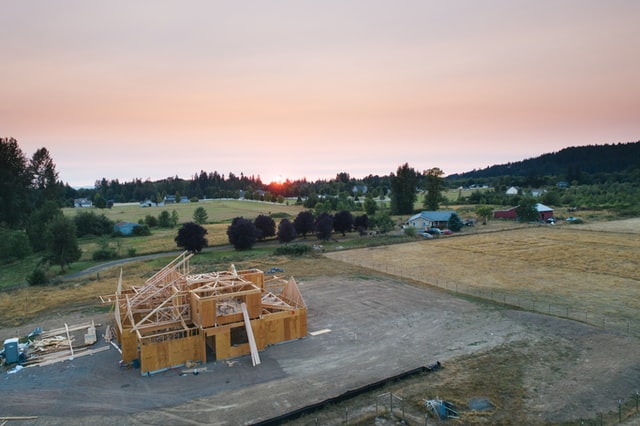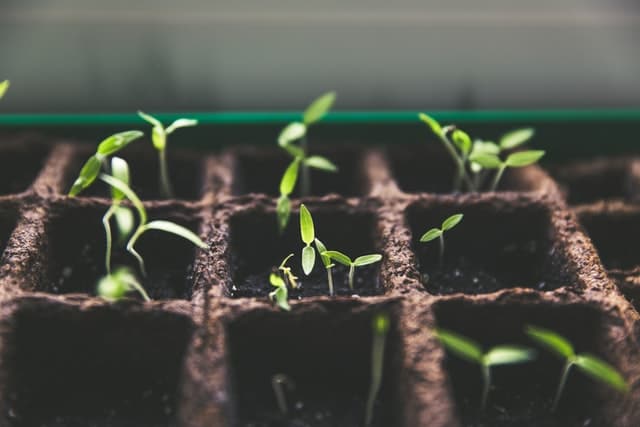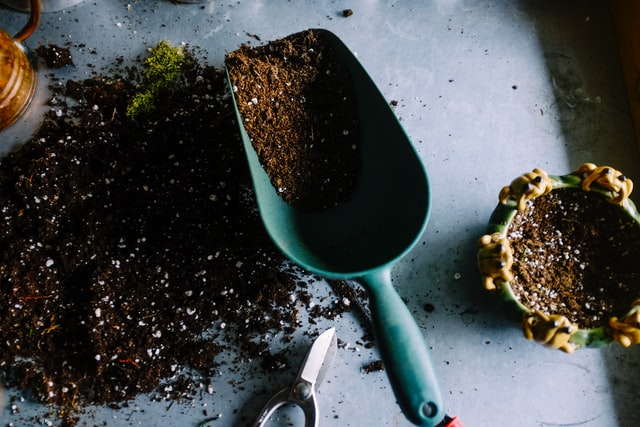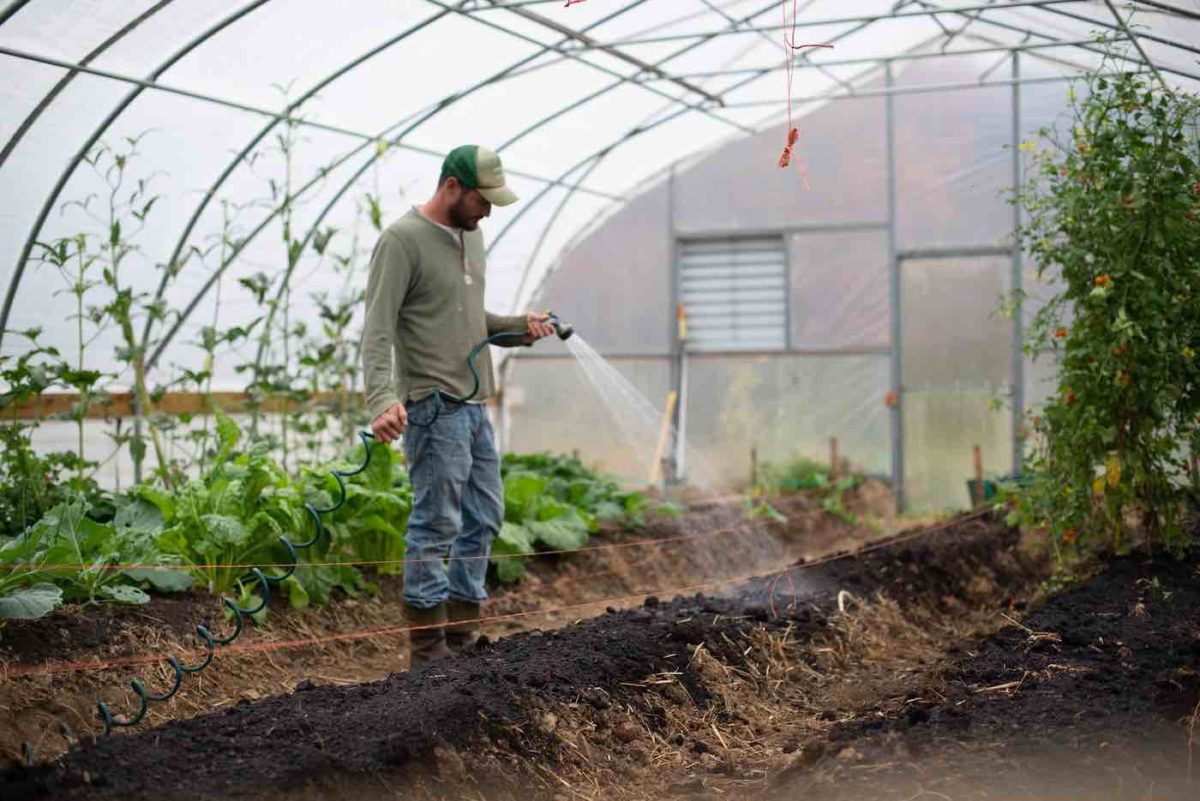If you’ve ever dreamed of living off the land and being self-sufficient, then you might have thought of wanting to start a homestead.
But homesteading can be OVERWHELMING. After all, there’s so much to consider and do. This makes it hard to know where and how you should start.
In this guide, we’ll show you how to start homesteading.
9 Steps on How to Start a Homestead
We’ll walk you through the BASIC STEPS to start you on your homesteading journey.
Step 1: Do Some Introspection
Homesteading is a BIG decision.
As such, you should first do some basic research on what homesteading entails. This is so you know EXACTLY what you’re getting yourself into.
If you don’t live alone, sit down with your companion/s and have an honest conversation with them.
If they’re not completely convinced about starting a homesteading lifestyle, then doing all the related tasks will be hard for you.
You should also think about why you want to homestead in the first place. Some questions to ask yourself are:
- Do I want to lower my carbon footprint?
- Do I want to live partially or completely off the grid?
- Do I want to care for animals and plants that will need more land?
Answering these questions can further help you decide if the homestead lifestyle is right for you.
Step 2: Check Your Property
Your property will dictate how big your homestead can be and what you can put in it.
But you should first check your city’s regulations to see what they say about homesteading activities.
For instance, you might not be legally allowed to have cows and pigs.
When you’re sure everything you want to do is legal, observe your environment.
If you’re looking for good garden space, notice the sun’s path so you know which part of the property gets enough sun exposure.
And if you are allowed to have animals, see if you have enough space for them.
After all, you wouldn’t want farm animals right beside your house! Otherwise, you’d have to deal with the noise and stink 24/7.
They probably won’t be happy if you put them on a smallplot of land either.
Nothing has to be set in stone at this point. However, try to visualize your dream farm as best you can. The key is to make it convenient and functional.
Step 3: Make a Homestead Plan
When you have a basic idea of what you want your homestead property to look like, it’s time to put everything down on paper.

Blueprint
Graphing paper is ideal for making blueprints. You can scale your yard with proper dimensions so you have an accurate idea of how much space you really have.
Map out your entire property — including everything like sprinkler systems, fences, and lawn furniture.
The important thing here is to be as DETAILED as you can. After all, this will be your guide in starting a new homestead.
Projects
Once you’ve seen your property on paper, you can now list down homesteading projects that are good for that space.
In this part, write down everything you want and can do on your property.
Instead of overwhelming you, this should help you focus on those projects. Additionally, this makes it easier to prioritize your tasks and know your next steps.
Budget
A good rule of thumb is to expect changes to your property to cost 50% more than expected.
You should expect an increase in utility costs, such as your water and heating bill too.
Budgeting is also a good chance to see how you can save money while homesteading.
For instance, if you’re concerned about electricity costs, you can consider utilizing solar power. But remember to add buying a solar panel system to your budget!
Recommended reading:
Step 4: Learn to Homestead
By this point, you already have some idea on how homesteading should work. But now it’s time to actually know how to do the specific projects you want.
The winter months are a great time to research about homesteading. Then you’ll be ready for the spring.
There are many websites and books that you can check out. Instagram and YouTube are great sources of inspiration too!
You can also visit local organizations that give homesteading workshops or classes.
While researching, you’ll find that all homesteaders are different. As such, do only what you’re capable of.
Remember that learning to homestead is a gradual process. So don’t expect to get everything right on the first go.
Step 5: Start With Gardening
When starting your own homestead from scratch, gardening would be an ideal first project.
This is because plants (especially trees) take some time to grow. So the sooner you plant them, the sooner they’ll also give you food.
Install an Herb and Vegetable Garden

Raised beds are good for smaller spaces. Meanwhile, open soil is better for bigger plants. You also have the option to plant in containers.
But raised garden beds are normally the best option when planting vegetables and herbs.
Additionally, when planting your own herbs, it might be better to place them nearer the kitchen for easy reach.
You can even plant them inside, so long as you keep them by a sunny window.
Recommend reading:
Plant Trees
Both ornamental and fruit trees are great to have.
- Ornamental trees provide a lot of shade, and even privacy — the latter being especially attractive if you’re in an urban setting.
- Fruit trees can offer that too. But they also produce food every year!
Remember to space the seeds or saplings well. If they grow too close to each other, they’ll compete for nutrients. This might stunt their growth.
Learn to Compost
Starting a compost pile is a great step towards going towards zero waste.
Just throw all your leaves, food scraps, and other biodegradable matter onto the pile, and you’ll soon get FREE soil. I can truly recommend a bokashi compost.
If you (or your neighbors or zoning laws) don’t like the idea of an open pile of compost, you can use a compost tumbler.

Step 6: Know How to Preserve Food
Having even just one food preservation skill can already help you save on food costs.
Besides, preserving your own food also means none of what you grow will go to waste.
Below are two examples of food preservation techniques you should learn:
Canning
This is the BEST way to preserve excess food for winter. There are two methods of canning.
Boiling water bath is when jars with special canning lids are completely immersed in boiling water for a certain time.
Meanwhile, pressure canning is where you heat the food hotter than the temperature of boiling water. This is better for certain kinds of foods such as unpickled vegetables.
Fermentation
Fermentation is quite easy to learn, though you’ll need to invest in the RIGHT containers.
Some of the things you can create with fermentation are
- beer
- fruit wine
- pickles
- hot sauce
- kombucha
Step 7: Raise Livestock
Admittedly, not all homesteaders raise animals. But many do!
If you’re considering raising animals, do you research. Be aware that animals have different needs in terms of space, foraging, and security.
For example, if you’re keeping chickens, you should build a predator-proof chicken coop. This should also give them shade during hot months, and protection during cold and windy days.
Other things you should keep in mind are:
- care routines
- waste management
- what animals are legal in your area
- if there’s a local veterinarian
- what you’ll do if you go on vacation
Recommend reading:
Step 8: Get Comfortable With More DIY Projects
When your plants and animals are doing well, you can go even deeper into the homestead life by learning more skills.
These will help you live a more self sufficient lifestyle.
Soap Making
Making your own soap can take some getting used to.
But if you batch them properly, you’ll be able to make A LOT in short time.
Making soap is great for sanitation purposes. You can also use herbs and some of the flowers that you grow!
Woodworking
Having woodworking skills means you can build and repair pretty much anything that’s made of wood in your home.
You’ll be able to deal with fencing for your animals or trellises for your plants.
Aside from knowing your way around a woodshop, you’ll also be knowledgeable in wood types and what they’re best used for.
Animal Husbandry
When you’re caring for animals, it’s a given that you should know how to feed, water, and house them.
But animals husbandry goes BEYOND that.
With this skill, you’ll also know how to breed and butcher them. You’ll even have knowledge in veterinary care!
This means you won’t need to pay extra to get other people to do the job for you.
Step 9: Connect With Other Homesteaders
When you decide to be a homesteader, you become a perpetual student. After all, there’s SO many things to learn about the self sufficient life.
Fortunately, there are many homesteaders you can connect with. The more experienced ones can give you tips on everything from good growing conditions to local laws.
You can barter with them too! So if you can mend your own clothing, you can offer that service to someone who has too many eggs.
Lastly, connecting with other homesteaders gives you a strong support system.
You can reach out to people online or visit your community gardens and befriend some of the people who grow their plants there.
What Is a Homestead?
Historically, according to the Homestead Act of 1982, a homestead is known as a piece of free land given to US citizens who would move to the West to settle on that land.
Nowadays, a homestead is essentially a person’s own house transformed into a something that can support a self sufficient and sustainable lifestyle.
Do You Need Land to Start a Homestead?
You don’t! This is because homesteading is actually a LIFESTYLE rather than something that relies on property.
Most people’s idea of homesteading is growing plants and animals.
But skills like preserving food, mending clothes, and such are already part of a homesteading .
How Can I Find Land for a Homestead?
If you live in the city, you can try urban homesteading. A raised bed of soil is good for small spaces. You can also put your plants in containers.
Depending on your local laws, you can also have backyard chickens and rabbits.
Or if you’re not very happy with a small homestead, you can check if there’s space in the community garden for your plants.
Yes, your homestead doesn’t have to be exactly where you live!
You can check if there’s a public land in your area that you can rent and transform into a productive homestead.
Another option is to leave your first house and find a piece of land. This way, you’ll have your homestead and house all in one place.
Some things to keep in mind when finding land are:
- Property taxes and rights
- Acreage
- Water source/s
Learn everything about the Homestead Exemption in your home state
We’ve done a magical research piece for you that shows the homestead exemption, how much you could claim back on your tax if you go down the homestead route, by state. Read it today!
Frequently Asked Questions about Homesteading
Homesteading is a big decision. Below, we answer a few questions that can help you make up your mind:
Is a Homestead Profitable?
Yes!
Some people have actually given up their jobs to live the homesteading life full-time.
The aim of homesteading is to go towards self sufficiency so you can somehow go off grid.
Even if you rent, borrow, or share land (rather than own it), you can also make a homestead function similar to small farms to generate income.
Below are a few ideas:
Sell Excess Foodstuffs
The longer you homestead, the more likely you’ll generate more food than you can eat or store.
But the trick here is to be creative on when and how to sell them.
For example, if you have excess eggs, you can sell them as is. But another option is to make them into other foodstuffs like bread so you can sell them at a higher price.
If you’re raising chickens, you can hatch chicks and sell them as is. Or you can hold onto them for a few months and sell them for meat or as point-of-lay hens.
Sell Plants
If you’re good with plants, you can get your income from selling them too!
Some seed packets might contain too many seeds for you. If that’s the case, you can grow them before selling them.
You can sell plant cuttings too. HERBS are especially profitable— especially cilantro, thyme, and lemongrass.
Research on the demand of plants in your region so you know how to price them accordingly.
Rent Out or Sublet Some Land
If you own land, you can rent other people a part of it.
This DOES mean you’re cutting your homestead space. But this also means you have less workload while having another source of cash flow.
Is It Legal to Homestead in the US?
YES, but there are differences in the details of the regulations.
For instance, Tennessee has a Rural Homesteading Land Grant. But your primary residence MUST be the homestead.
Meanwhile, in Nevada, you’ll need to get the right permits first before you can live off grid. They also have restrictions regarding harvesting rainwater.
If you’re planning on homesteading, familiarize yourself with your state’s laws about it first.
Conclusion
Homesteading can be an overwhelming responsibility to take on.
But entering that lifestyle helps you save costs and be self sufficient, among other benefits.
So if you want to try homesteading, follow the above steps to start your journey. And remember that it’s also a continuous learning-and-doing process.

6 replies on “How to Start a Homestead: Step-by-Step Beginner’s Guide”
[…] Living off grid in a Homestead, start here!Step-by-Step Beginner’s Guide to starting a Homestead […]
[…] and can adapt to various environments.Also, these farm animals have a low environmental impact, making homesteading even easier. So, if you’re unsure which, farm animals are the simplest to rear, these are a few alternatives […]
[…] to make some extra money from your small farms or home garden? We’ll list the most profitable crops you can grow to add to your list of profitable hobby farm […]
[…] Thankfully, you don’t need heavy machines. Let’s look at the best spreaders for small yards and homesteads. These are especially important if you’ve just gotten started with your homestead. […]
[…] are interested in growing your own trees for firewood or to resell, maybe as part of your way of starting a homestead, we have compiled a list below, along with their pros and […]
[…] you’re someone who lives in the city and wants to start a homestead, you can easily incorporate many aspects of homesteading within a smaller space. There are many […]